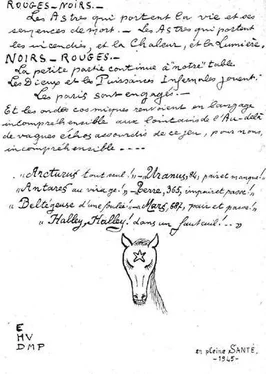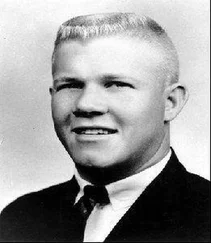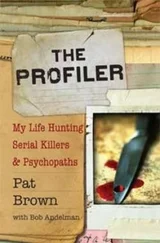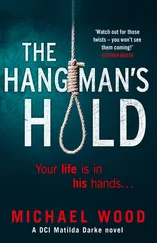As Maurice explained to the commissaire, he had failed to answer honestly because he feared that the information would give a false impression. He was also trying to protect the truck driver, who had been sworn to secrecy about the lime. Maurice acknowledged that he had made a mistake in covering up his involvement in the delivery, but he was no murderer and knew nothing about bodies in his brother’s town house.
“My brother did not keep me informed of his business,” Maurice said. What he did know was that Dr. Petiot had wanted the building on rue Le Sueur to establish “a clinic for cancer and tumor research.” Georgette Petiot, he added, had certainly visited the property, because his brother would not have bought it without showing it to her.
Asked about his own visits to rue Le Sueur, Maurice said that he had never seen anything unusual. Nor had he been surprised by the disorder and bric-a-brac that prevailed, as his brother was an avid collector who enjoyed purchasing items at auction houses. He had, he now admitted, entered the triangular room, which he described as “a sort of cabinet noir.” While he claimed not to recall any hooks on the walls, he had seen the false door, which had intrigued him, and he had tried to open it with an iron bar. He had concluded that it was merely decorative.
It was during this interview that Maurice admitted that he had learned of the discovery of the crime scene not on Monday, March 13, as he had claimed, but actually on March 11. He had received a late-night anonymous telephone call. Adamantly and repeatedly, he swore that it was not his brother who made the call.
Massu asked if Maurice had questioned the caller, and his response was curious. “I wanted to know how the bodies had been discovered, but nothing was said on the subject.” If Maurice did not know anything about the murders, it is striking that this was his first question. It is also striking that, as Massu soon learned, this so-called anonymous phone call had lasted almost eight minutes: 9:54:36 to 10:02:32.
Massu took Maurice down the corridor, past a line of photographers to the juge d’instruction , or examining magistrate, where he was booked for complicity.
“I am convinced,” Massu soon told reporters, “that the refuge of the doctor is known by his brother and also his wife.”
11.
SIGHTINGS
BLOOD, MORE BLOOD, STILL MORE BLOOD.
—Commissaire Massu
THE extensive coverage of the Petiot affair soon escalated into a full-blown media circus. Newspapers dubbed the doctor the Butcher of Paris, the Scalper of the Étoile, the Monster of rue Le Sueur, the Demonic Ogre, and Doctor Satan. One of the first and more popular sobriquets was the Modern Bluebeard, comparing Petiot to the rich aristocrat in a late-seventeenth-century folk tale who killed his wives and hung their bodies on hooks in a room underneath his castle. Later, other names would be proposed for the murder suspect, from the Underground Assassin to the Werewolf of Paris.
Speculation was rampant. Petiot was discussed in sidewalk cafés, smoky cabarets, and brothels that flourished day and night around the city. In the métro during an air raid alert on March 24, 1944, a journalist for Paris-Soir noted that people spoke only about Marcel Petiot. Many Parisians were reminded of a popular movie, two years before, Henri-Georges Clouzot’s L’Assassin habite au 21 (The Murderer Lives at No. 21). In the film, Scotland Yard struggled to catch an elusive London killer who teased authorities by leaving behind his calling card “Monsieur Durand.” The motive for the murders in the film was profit. Petiot’s motive, on the other hand, was not so easily determined.
Rumors circulated that the physician was an “insane sadist” who tortured his victims savagely before burying them alive in quicklime. He was, it was also asserted, a sexual predator who slaughtered for thrills or, as Jean Boissel put it in Le Réveil du Peuple , sought raw material for his black mass ceremonies. Le Cri du Peuple was focusing on his scalping of the victims. Other people suggested that the suspect was a mad inventor who conducted gruesome experiments to perfect his torture devices, including a distance-operated syringe that injected poison into his victim. The police, Le Cri du Peuple reported, were trying to track down the craftsman Petiot supposedly hired to build the machine.
Photos of the grinning monster with the hypnotic eyes appeared regularly on the front pages. Le Petit Parisien reported that Petiot took “sadistic pleasure in listening to the pitiful confidences” of his patients in drug treatment before finally writing them a prescription, which, Paris-Soir noted, was often adorned with obscene rhymes. Petiot was “Satan in person,” a former schoolmate at Auxerre told a journalist for A Matin . Sales of French newspapers soared, soon reaching their highest levels since the Occupation.
The sensational tales, however, hardly helped the police sort through the layers of mystery that surrounded the case. Readers sent in tips, some of them bizarre. A psychic claimed that Petiot was hiding in the Neuilly district of Paris, either at No. 4 or No. 20 boulevard d’Inkermann, or No. 2 or 4 rue de Chartres. A radiesthesist, using his pendulum to detect energy vibrations from a map, declared that Petiot had fled to his home region of Auxerre. Another seer reported having visions of the dead physician, poisoned and abandoned on a country road in Yonne. Other people speculated that he had committed suicide, perhaps using one of his own injections.
A small book printed on rue d’Enghien in Brussels that March noted the widespread belief that Petiot would likely soon die at the hands of his drug suppliers or some other shady accomplice who would be unnerved by the prospect of Petiot revealing everything he knew. Many policemen had already expressed a similar fear, not least Massu. “If Petiot is still alive,” the commissaire said, “we will not take long to catch him.” In the meantime, the sightings continued. Fifty thousand concierges and countless shop workers across Paris would be on the lookout for the serial killer, predicted Maurice Toesca of the Préfecture de Police.
The lack of information on the doctor’s whereabouts only fueled the rumors. Someone believed he had seen Petiot handing out candy to children in a Parisian square, and an anonymous caller to the police reported seeing him enter a building in the northwestern suburb of Asnières. A journalist at L’Oeuvre thought that he spotted Petiot on a métro quay, wearing dark glasses and a beard.
Petiot was spotted all over Paris, or headed north to Brussels, west to Andorra, or south to Morocco or Algeria. A man in Orléans was sure he had seen Petiot at his inn. The physician, he said, had arrived on a black bicycle, breathless and lost in his thoughts. Intrigued, the innkeeper had invited him for dinner. Petiot had said nothing coherent other than ask where he might obtain a boat. The innkeeper was certain that he had dined with the Vampire of rue Le Sueur.
It was not always easy to confirm or refute the many stories that circulated in the aftermath of the discovery. Two women, for instance, were also positive that they had spotted Petiot that March at a central train station, booking passage to Anvers. While one of them followed the suspect, keeping him in sight, her friend rushed to a nearby kiosk for reinforcements. The crowd accosted the fellow, only to find that the alleged mass murderer was a Spanish merchant on a business trip. “Pity,” one of the women was overheard saying, “I would have liked so much to have seen him.”
The reason no one had found Petiot, some Parisians speculated, was that he dressed up as a woman, adding new relevance to the collection of blouses, skirts, and lingerie uncovered in his closets at rue Le Sueur. Other people believed that he had evaded detection by moving in with a lover, one of his “freemason brothers,” or, as the press initially reported, with a band of Resistance fighters in the countryside. Still others, hardened by years of press manipulation, believed that the real Petiot had already been arrested in Vichy, or that he never existed other than as a fabrication by the German authorities to distract Parisians from the hardships of war. “It is a myth inspired by the Landru Affair,” the historian Léon Werth wrote, noting the rumor in his diary March 29, 1944. “There has never been the shadow of a cadaver at rue Le Sueur.”
Читать дальше












